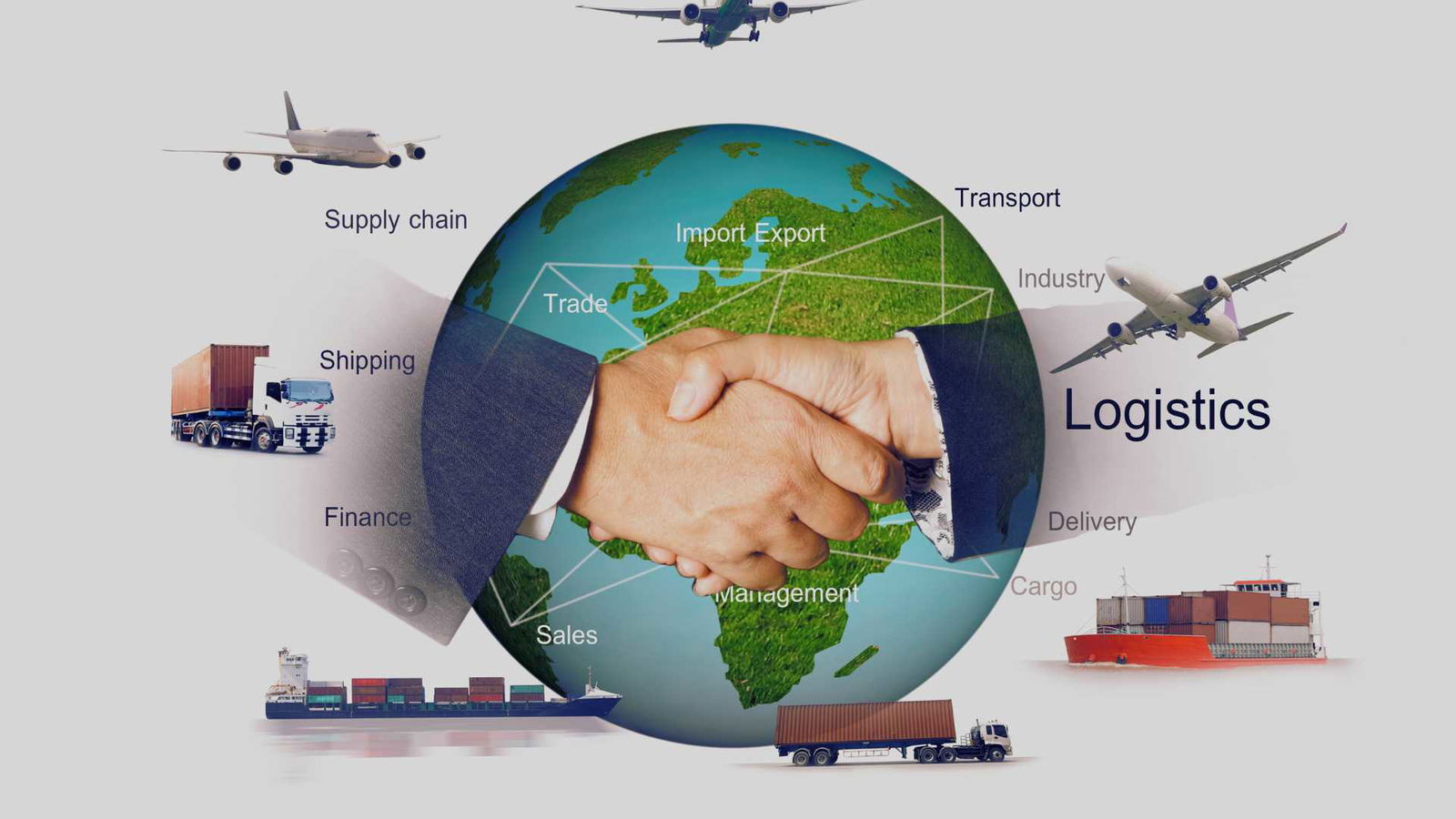![]()
Import Export Code Registration Trends
In the vast realm of international trade, the Import Export Code (IEC) registration is a formidable passport that opens doors to global commerce. The linchpin allows businesses to engage in cross-border transactions, import goods, and export their products to foreign shores.
The world of IEC registration is dynamic, constantly evolving to meet the demands of a rapidly changing global marketplace. In this article, we delve into the critical role of IEC registration and emphasize the necessity of keeping pace with the latest trends in this domain.
What is the Import Export Code (IEC)?
Import Export Code (IEC), the Importer Exporter Code, is a unique 10-digit alphanumeric code issued by India’s Directorate General of Foreign Trade (DGFT). It is a mandatory registration for Indian businesses engaged in international trade. IEC acts as a gateway, enabling businesses to import goods into India and export products to foreign markets.
Significance of IEC in Expanding Business Horizons
IEC registration extends beyond legality; it’s a strategic imperative for businesses looking to expand globally. Here’s why IEC is instrumental in expanding business horizons:
- Global Reach: IEC enables businesses to access international markets, allowing them to export products and services to a broader customer base.
- Competitiveness: It enhances competitiveness by facilitating cost-effective raw materials and technology imports, making businesses more agile and responsive.
- Business Diversification: IEC enables diversification into international markets, reducing dependency on domestic markets and minimizing risk.
- Access to Government Incentives: IEC-registered businesses can access government incentives, schemes, and benefits to promote exports and international trade.
Evolution of IEC Registration Processes
Over the years, IEC registration processes have undergone significant transformations in response to the changing dynamics of international trade:
- Manual Processes: In its nascent stage, IEC registration involved predominantly manual procedures. Businesses were required to fill out physical forms, submit paper documents, and interact with government authorities through traditional channels.
- Introduction of Online Registration: A notable milestone in the evolution of IEC registration occurred with the introduction of online registration platforms. This digitalization of the process brought about a paradigm shift, allowing businesses to apply for and obtain IEC codes through web-based applications.
- Streamlined Application Forms: The transition to digital platforms also saw a simplification of application forms. The process became more user-friendly, reducing administrative hurdles for businesses seeking IEC registration.
- E-Governance Initiatives: The Indian government’s emphasis on e-governance initiatives played a crucial role in enhancing the efficiency of IEC registration. It led to the development of user-friendly portals, real-time tracking mechanisms, and faster processing times.
- Digital Signatures and Paperless Transactions: IEC registration processes evolved further by adopting digital signatures and paperless transactions. This not only reduced paperwork but also enhanced data security and authenticity.
Policy Changes and Amendments
Major policy changes and amendments have been instrumental in shaping IEC registration processes:
- The Foreign Trade (Development and Regulation) Act 1992 underwent several revisions to adapt to the evolving global trade landscape. These changes influenced the regulatory framework surrounding the IEC.
- The Directorate General of Foreign Trade (DGFT) periodically issued notifications and guidelines to streamline IEC registration, outlining eligibility criteria, documentation requirements, and renewal procedures.
- The introduction of the Goods and Services Tax (GST) in 2017 also had implications for IEC registration, as it altered the taxation framework for international trade.
Key Trends in IEC Registration
In recent years, the realm of Import Export Code (IEC) registration has witnessed a transformative shift driven by technology, digitalization, and e-governance initiatives.
These trends have streamlined the registration process and empowered businesses to participate more efficiently in international trade.
-
Digitalization of IEC Registration:
Digitalization has revolutionized IEC registration by transitioning from traditional paper-based systems to online platforms. Here’s how:
- Online Application: Businesses can apply for IEC codes through user-friendly online portals. This eliminates the need for physical forms and reduces paperwork.
- Efficient Processing: Digital submissions and document uploads facilitate faster processing, reducing the time required to obtain an IEC code.
- Real-time Tracking: Applicants can track the status of their IEC applications in real-time, enhancing transparency and reducing uncertainty.
-
Adoption of Technology:
Technology adoption has played a pivotal role in modernizing IEC registration processes:
- Digital Signatures: Using digital signatures has improved authentication and data security in IEC applications.
- Biometrics and Aadhar Integration: Leveraging Aadhar integration and biometric authentication has simplified identity verification, reducing the need for extensive documentation.
-
E-Governance Initiatives:
E-governance initiatives have brought government services closer to citizens and businesses. In the context of IEC registration, this has resulted in significant improvements:
- Single-Window Clearance: Initiatives like the Single Window Interface for Facilitating Trade (SWIFT) aim to provide a unified platform for all import-export clearances, making the process more efficient.
- Centralized Data Management: E-governance initiatives enable centralized data management, reducing redundancy and errors in IEC registration.
Benefits of Embracing IEC Registration Trends
-
Streamlined Processes and Reduced Administrative Burdens:
- Efficiency in Application: Digitalization and online platforms have simplified the IEC application process, reducing the need for paperwork and manual submissions. This streamlining minimizes administrative overhead, saving both time and resources.
- Quick Processing: Adopting digital signatures and real-time tracking expedites IEC processing times. Businesses can obtain their IEC codes faster, allowing them to engage in international trade promptly.
-
Enhanced Efficiency and Reduced Costs:
- Cost Savings: Reduced paperwork, faster processing, and fewer manual interventions translate into cost savings. Businesses can allocate resources more efficiently, focusing on core trade activities rather than administrative hassles.
- Logistics Optimization: With efficient IEC registration, businesses can streamline their supply chain operations, resulting in lower logistics costs and improved inventory management.
-
Improved Compliance:
- Accuracy and Authenticity: Digitalization enhances data accuracy and authenticity, reducing the risk of errors in IEC registration. This ensures businesses comply with trade regulations, avoiding penalties and legal complications.
- Simplified Record-Keeping: Digital records are easier to maintain and retrieve. This simplifies record-keeping and compliance checks, facilitating transparency in international transactions.
Challenges and Concerns
-
Cybersecurity Risks and Data Protection:
- Data Security: Digitalization and online platforms involve storing and transmitting sensitive business data. This raises concerns about data security and the potential for breaches or cyberattacks.
- Identity Theft: With the integration of Aadhar and biometric authentication, the risk of identity theft becomes a concern. Unauthorized access to personal information can lead to fraudulent IEC registrations.
-
Technical Glitches and Downtime:
- Platform Reliability: Businesses relying on online registration platforms may face challenges related to platform downtime or technical glitches. These issues can disrupt the registration process and cause delays.
-
Compliance and Legal Framework:
- Understanding Regulations: Some businesses may struggle to keep up with evolving trade regulations and IEC-related policies. This can result in inadvertent non-compliance, leading to penalties and legal complications.
-
Resistance to Change:
- Reluctance to Digitalization: Traditional businesses might be reluctant to fully embrace digital IEC registration due to a lack of technical expertise or a preference for familiar paper-based processes.
- Data Privacy Concerns: Businesses may have concerns about their data privacy when using online platforms, leading them to hesitate in adopting digital registration.
-
Resource Constraints:
- Investment in Technology: Smaller businesses may face resource constraints when investing in technology or acquiring the necessary hardware and software for digital IEC registration.
-
Training and Awareness:
- Lack of Training: Employees may require training to adapt to digital processes. The absence of adequate training programs can hinder a smooth transition to modern IEC registration.
The Global Impact
Staying ahead in Import Export Code (IEC) registration trends goes beyond individual businesses; it has a significant global impact on international trade. Here’s why:
-
Facilitating International Trade Agreements and Partnerships:
IEC registration is a fundamental prerequisite for businesses engaging in cross-border trade, making it a vital element in international trade agreements and partnerships. Countries and regions often require IEC registration to prove a business’s legitimacy and commitment to comply with trade regulations. This facilitates smoother trade negotiations and strengthens bilateral and multilateral trade ties.
-
Promoting Export-Led Growth:
IEC registration fosters export-led growth, a key driver of economic development in many countries. Governments recognize the importance of IEC registration as it enables local businesses to access international markets and increase their export volumes. This contributes to economic diversification and strengthens a nation’s position in the global economy.
-
Ensuring Compliance with Trade Regulations:
IEC registration ensures that businesses adhere to international trade regulations and standards. By streamlining IEC registration processes and making them more efficient, countries promote greater compliance among businesses. This, in turn, reduces the risk of trade disputes and enhances global trade stability.
-
Role in Regional Trade Blocs:
IEC registration is pivotal in regional trade blocs such as the European Union (EU) and the Association of Southeast Asian Nations (ASEAN). These blocs often require standardized registration procedures for businesses to participate in intra-regional trade. Streamlined IEC registration processes facilitate a seamless flow of goods within these blocs.
-
Global Competitiveness:
Businesses operating in countries with efficient IEC registration systems are more competitive globally. Their ability to access international markets quickly and efficiently gives them a competitive advantage over counterparts from regions with less streamlined registration processes.
Preparing for the Future
As businesses navigate the ever-evolving landscape of Import Export Code (IEC) registration, it’s crucial to prepare for the future to remain competitive and compliant:
-
Ongoing Training and Education:
Invest in continuous training and education for trade professionals within your organization. Stay updated on changes in trade regulations, technology, and digital tools related to IEC registration. Encourage employees to participate in workshops, webinars, and courses that enhance their understanding of global trade practices.
-
Embrace Technological Advancements:
Watch emerging technologies that can further simplify IEC registration and global trade processes. Explore automation, artificial intelligence, and blockchain solutions that have the potential to revolutionize the trade industry. Be ready to integrate these technologies when they become practical and accessible.
-
Stay Informed About Regulatory Changes:
Regularly monitor updates and amendments to trade regulations and IEC registration requirements. Collaborate with trade associations, industry peers, and government bodies to stay informed about policy changes. This proactive approach will help you adapt to evolving regulatory landscapes.
-
Foster a Culture of Adaptability:
Encourage adaptability and flexibility within your organization. Develop a culture that embraces change and innovation. Promote cross-functional teams that can quickly respond to new challenges and opportunities in the global trade landscape.
-
International Networking:
Engage in international networking and trade forums. Building relationships with global partners, trade associations, and government bodies can provide insights into upcoming trends and regulatory changes. These connections can also open doors to collaborative ventures and business opportunities.
-
Collaboration and Partnerships:
Consider collaborating with technology providers, logistics firms, and legal experts specialising in international trade. These partnerships can offer valuable expertise and solutions to streamline IEC registration and international trade processes.
Conclusion
In conclusion, staying updated with Import Export Code (IEC) registration trends is not just a choice but a strategic imperative for businesses engaged in international trade. The significance of these trends lies in their power to streamline processes, reduce administrative burdens, enhance efficiency, and ensure compliance with global trade regulations.
By embracing these trends, businesses can gain a competitive edge internationally, access new markets, and fuel their growth. With optimism for the future, we anticipate further evolution and simplification of IEC registration processes, opening doors to endless opportunities and enabling businesses to flourish in the dynamic and interconnected global marketplace.





